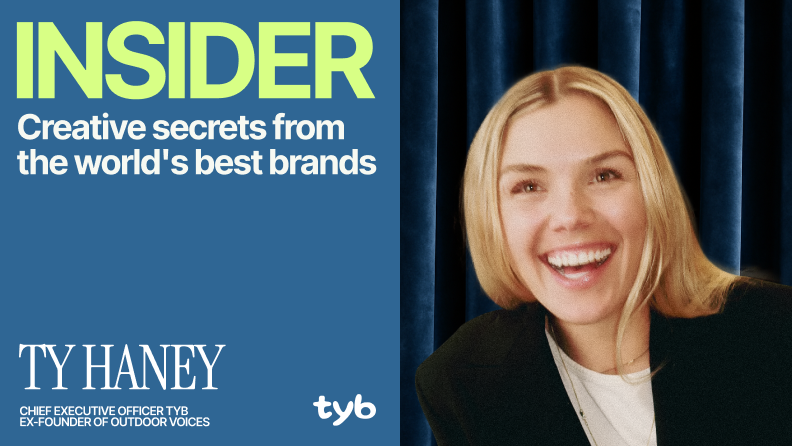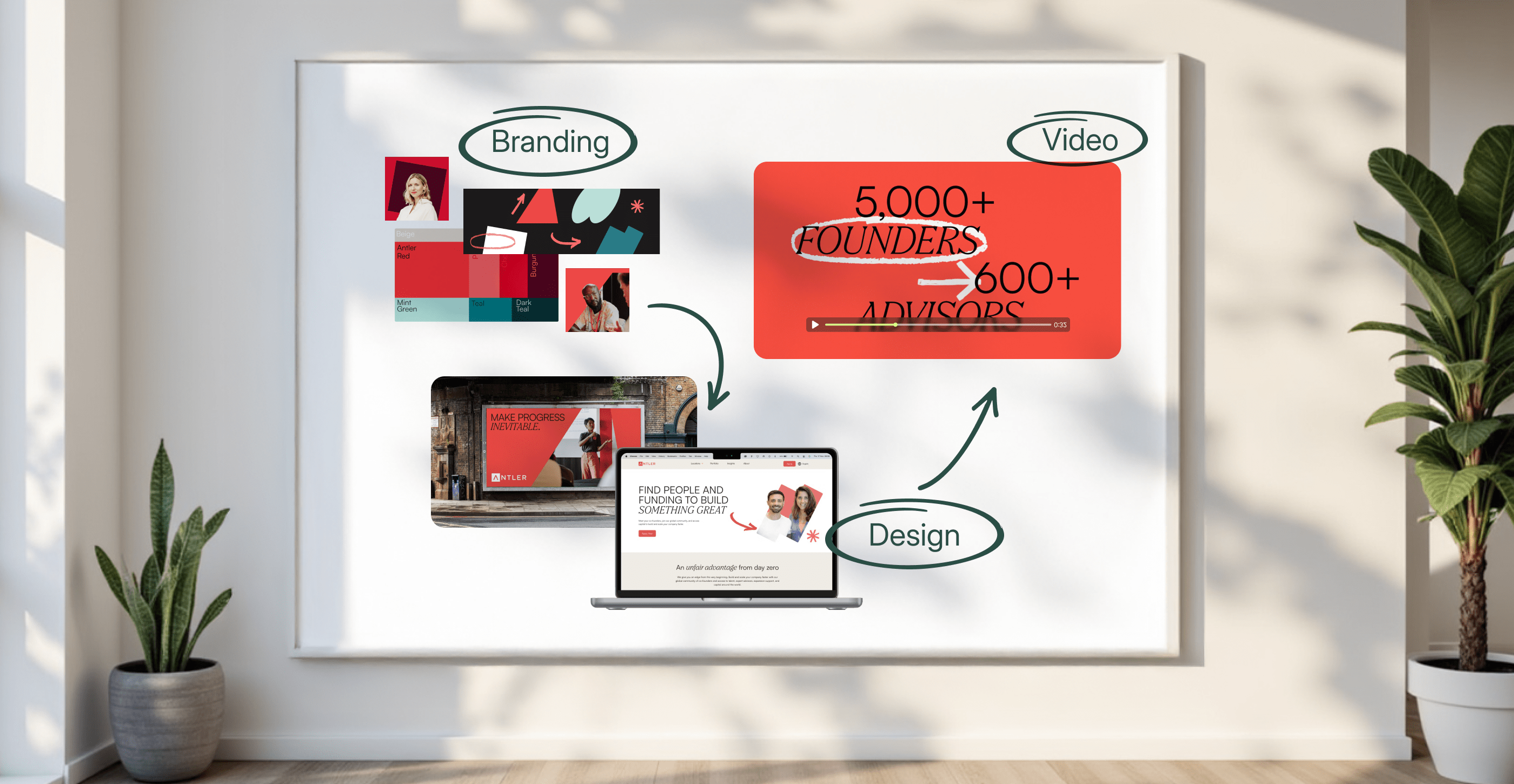Brand Storytelling and Why It's So Important Going Forward

As businesses of every shape and size battle to establish themselves in an oversaturated market, the ability to tell a great story has become essential. With how much brand-related content consumers encounter in a single sitting, building an immediate emotional connection is the only shot most businesses have at earning their consideration.
Strong brand storytelling is what sets your business apart. Your target audience’s attention is limited, so the ability to excel at branded storytelling through avenues such as content and design is imperative to success.
Below, we'll dive into all you need to know about brand storytelling and what it can do for your business now and in the future.
Let's get into it!
Why is Brand Storytelling Important?
7 Steps of Great Brand Storytelling
The Best Practices for Brand Storytelling
Using Video to Tell a Compelling Brand Story
Examples of Good Brand Storytelling
What is Brand Storytelling?
Compelling brand storytelling is all about using a narrative that connects with your consumer through shared values. Jeep ads feature the Wrangler tearing through mud, sand and forest regeneration areas because Jeep buyers are seen to be adventurous. When Jeep films a stunt driver doing donuts in the desert, a light goes on for select consumers: “That could be me.”
The most effective brand stories are told through media like videos, motion graphics, blog posts, and images. It’s best to tell the same (or similar) stories across different platforms to maximize brand awareness.
Brand narrative
The narrative of your brand is your story and the elements within. The story can be about the business or someone adjacent to the business, but it should succinctly tell potential customers why the business exists.
In such a competitive marketplace, the greatest brands are often those with the greatest stories. The key pieces of a story are characters, a setting, conflict, rising action, climax, and a resolution. Here’s what that can look like in brand storytelling: A seemingly regular person (character) living in a humble or relatable location (setting) encounters a problem for which there is no product/service solution (conflict). Spurred on by the lack of solutions, they search for someone who can help them (rising action), find the perfect product/service for their needs (climax), and solve the problem once and for all (resolution).
You can tinker with the formula based on the connection you want viewers to make, or to appease your inner contrarian. So long as what you make conveys a coherent and compelling story to your target market, you can’t go too far wrong.
Brand values
Like human values, brand values are the character traits of your company. They’re also how consumers can expect your company and employees to behave.
Values often don’t speak to the product/service you sell, or about making money. They’re the driving principles behind your company, and they should differentiate you from the competition. Some examples are environmental stewardship, employee recognition, diversity or a combination of many.
Why is Brand Storytelling Important?
Converting an audience means succeeding at brand recall and recognition, staying consistent, and helping your audience distinguish you from the competition. Your audience has a lot of information thrown at them daily, and they need you to do the work of distinguishing yourself if they’re going to give you more than a moment’s thought.
Your storytelling power lies in grabbing consumer attention and running with it. Your target demographic wants to connect with you and build a relationship based on more than the exchange of money for goods.
7 Steps to Strong Brand Storytelling
How can you put your strategy in motion? It can be overwhelming to have a fantastic brand story to share, but stumble trying to get it across. Here are seven steps to brand storytelling that'll help you get started.
While these steps can help you get the ball rolling, there’s nothing as effective as having a pro marketing and design team in your corner to make your message loud and clear.
Find your story
While you probably know why your brand sparks passion in you, you've got to find a way to turn it into a story others can make sense of. Take the time to establish which pieces of your journey will work in a narrative format, and ask yourself the following questions:
- What challenges does your consumer base face that could make a good story?
- Do you have case studies or customer stories that could be made into a story?
- Can you gather insights directly from your customers by asking for feedback, posting surveys, or posting social media polls?
Choose a hero
Every story begins with a hero. The customer is usually your hero in brand storytelling, but you can't express their “potential customer” status outright—audiences don’t like feeling marketed to so overtly. Instead, create an actual character with motivations, challenges and needs. You don’t need to write a novel, but you do need to think of ways you can quickly make them relatable and their needs apparent.
Your hero should always mirror your target customer’s traits.
Define a goal or journey
Every hero needs a mission. What does your character want? If you make running shoes that guarantee comfort, your hero's journey likely starts with sore feet and ends with your sneakers. This story might not seem like a page-turner, but it can turn into one when you add a little energy and strike the right tone.
Every brand story has a big “why”, and it’s always tied to personal happiness in some way. Think of how your prospective customer may experience struggle prior to your business, and what happiness looks like to them after it.
Your main character's goal is the foundation of your story, consistently running through the content to keep that goal at the forefront of consumers' minds. Keep your audience wondering how the hero’s going to solve their problem.
Bring on the conflict
Conflict is what makes stories exciting. In the example above, consider some challenges consumers might face if they don't have a high-quality running shoe. They might be some of the challenges you faced before developing the product. Frame real-life problems into your story narrative that shows your hero making their way, fighting through challenges to accomplish their goal.
Look at everything from an emotional lens: What do sore feet mean to someone who runs every day? Maybe they’ve tried several brands before landing on yours. They’ve run hundreds of miles in uncomfortable shoes. Something that’s meant to be rewarding is instead punishing.
Add a little drama
The central conflict is only the beginning of the drama. You'll want to add elements that make your story exciting for the reader. You can embellish here, but never lie, as transparency in marketing is essential.
Include interactions with others that create intrigue or build suspense. You can be serious with your conflict, or you can add humor. Choose the path that matches the tone of your brand.
In the shoe story, think of what might happen to a runner whose love of running is affected by their uncomfortable shoes. Maybe they don’t run as much, maybe they get hellishly uncomfortable blisters, maybe they run straight into a tree. Ok that last one might be too dramatic.
The hero experiences change
At this point, your hero is increasingly certain their situation is hopeless. They may be increasingly certain their situation is hopeless, and something has to change.
That’s when you shine the light. Something sparks change either in or around them, and they emerge better than before. Make it compelling, but keep it realistic: The shoes should not save their marriage or destroy the Death Star.
Think about what it means when your relatable character makes the big switch. Comfortable new kicks have them not only enjoying running, but running more than before. With your shoes, they’re happier and possibly more active than ever. Turns out a comfy shoe isn’t a luxury item for them—it’s a necessity.
Wrap it up
How did our hero meet their victory? With your brand, of course. This is where you get to convey to consumers where your capabilities align with their needs.
You can get a little sales-y here, but keep your focus on the consumer as an individual. Make your mission statement clear (e.g. “to make comfort a necessity, not a luxury”), and indicate where they can learn more about the product/service.
Best Practices for Brand Storytelling
Besides the outline above, consider the following tips to help you maintain best practices in your brand storytelling.
Stay aligned with your brand voice
Brand storytelling works best with true stories. It’s not just honest, but usually true to your brand voice as well: No one can speak about your business’ real world value better than a real world customer. Embellishments can be used sparingly, but sticking to facts will keep you on track. Keep it simple and avoid elaborating too much.
Maintain a pace
Read your story over a few times to make sure it flows nicely. Going off on tangents that don’t drive the story forward is bad practice, and will likely cause consumers to move on. Focus on saying a lot with a little (i.e. your runner rubbing their swollen feet after an arduous run), and bear in mind how each piece of your story fits with the one to come.
It’s natural for the first draft to be a little rough. Cut down extraneous pieces until you’ve got a draft that tells your story concisely and impactfully.
Using Video to Tell a Compelling Brand Story
Video marketing is how many brands are telling their stories today, and for good reason. It’s the clearest way to communicate ideas in the information age, which is why we engage with video content more than any other content. When translating your brand story to the video medium, keep the following as a checklist for a smooth transition:
- Clearly address your customer's challenges
- Experiment with audio and visuals
- Embrace the chance to be visually impactful
- Add an original or unique brand touch (something that distinguishes your brand from competitors)
The logo test
Use the “logo test��” against your completed video to gauge originality. Just picture your main competitor's logo on your video, and ask yourself:
- Does the video still tell your company's story, even with a different logo?
- Does it feel unique enough to differentiate from a competitor, or could this just as easily be content they created?
(And for any insight on what we feel are good logos and why they work, check out our unfiltered opinion on some of the world’s most famous logos.)
Examples of Good Brand Storytelling
You’ve got the basics of brand storytelling in your back pocket. Here’s what it looks like when industry leaders apply the same principles to their marketing efforts.
Airbnb and video content
As a company, Airbnb doesn’t have an interesting story to tell. So, they pointed our attention to Airbnb hosts instead. They gave consumers an inside look at their hosts worldwide, helping potential travellers feel connected to those who own the properties they’re staying at. The hosts are shown to be warm, loving people who thrive on the sense of community they provide. Viewers come away with a lightness: They’d be safe in these peoples’ hands.
How did Airbnb get us here? We can guess that they recognized their target audience’s need for safety and security—hard to come by for travelers in a new place—and thought of how their “superhosts” might provide just that.
With 250,000 subscribers on YouTube, superhosts campaign tells a heartwarming story about a relatable need being fulfilled.
Old Spice and changing the conversation
Old Spice makes hygiene fun. Viewers already know why it’s necessary, so the company’s made “irreverent fun” their brand voice.
They’ve got eBooks that help mothers understand their pubescent sons. They’ve made their theme a downloadable ringtone. They subvert expectations while remaining true to their voice.
Tell the Best Story for Your Brand
Every successful brand makes storytelling part of their marketing strategy. Two cans of Coke by a campfire, a bag of McDonald’s at a birthday party—every image a story, every story a case study for joy from the little things in life.
The people who tell the best brand stories are those with great and varied experience doing so. Professionals who don’t just have an eye for narrative, but a proven track record building and telling brand stories with the best tools available: graphic design, video marketing, motion design and more. In expert hands, brand stories become moving experiences that drive growth and scale ambitious businesses.
David is a Senior Content Marketer at Superside. A former journalist with bylines too numerous to enumerate, he brings his love of storytelling and semantics to the marketing world. Recognizing the sizable gaps in the creative-as-a-service (CaaS) sector, he jumped at the chance to fill the creative void for ambitious brands. In his off hours, he enjoys loud music, making vegan meals and being made fun of for making vegan meals. He’ll gladly talk to you about any of the above on LinkedIn.
You may also like these

10 best product design companies of 2025
In a world flooded with digital products, the difference between a product that gets adopted by target audiences and one that gets ignored is design.Modern users are no longer merely satisfied with products that work. They seek intuitive, beautiful experiences and products they truly enjoy using. In sectors such as SaaS, consumer tech, healthcare and fintech, design shapes brand perception, product adoption, user engagement and, ultimately, loyalty.For enterprises and high-growth brands, the stakes are high. Every design misstep and delay could translate into lost relevance. Yet many in-house design teams have too little bandwidth to deliver products at the speed, scale and quality now required. On the other hand, traditional agencies move too slowly or aren’t built for the level of iteration modern tech enterprises require.This is where a top-notch, dedicated product design service can tip the balance in your favor. In this article, we unpack why great product design is a non-negotiable. We also share 10 product design companies that can help you create an in-demand, highly successful product.Why great product design is a competitive advantage for enterprise brands
Why brands that build community get customers for life
Ads don’t seem to hit like they used to. Your customer acquisition cost is through the roof. And even when you do bring in customers, it feels like they’re only with you for a moment before disappearing forever. Some brands might be able to sustain their growth in these conditions, either because they have a massive war chest or their customers make massive transactions.But for most, there’s a better way to grow. By building a community and a fan base, you can get customers for life.At Superside’s Insider Summit, Ty Haney, three-time founder and current CEO of Try Your Best, shared how her approach to community has catapulted the brands she’s built to new heights—and how her latest venture has turned this into a business.What is community-led growth?In short? Shifting from acquiring customers to building a fan base. It means creating experiences that reward customers, granting them access to exclusive perks, and giving them something to get excited about beyond the transactional. It’s about giving them opportunities to become obsessed with your product and your brand until they become micro-influencers.
5 creative marketing services that change enterprises’ ROI in 2025
With digital advertising projected to bring in 73.2% of global ad spend, the pressure to consistently produce standout creative at scale is real. For a chance to connect with target customers, enterprise teams must now deliver high volumes of top-quality marketing creative across multiple channels.For most enterprises, increased output is only one part of the challenge. It’s usually just as tough to achieve consistency, speed and good results, especially if resources are limited. And limited they are: Our recent Overcommitted report confirmed that today’s creative teams simply juggle too much.Fortunately, many top marketing executives have come to realize their in-house creative departments can’t do it all themselves. Superside’s customers, for example, experience first-hand how a combination of strategy, data, AI-driven workflows and creative muscle can help them scale smarter, give bandwidth back to their teams and deliver a high ROI.Want to improve your creative production output and deliver eye-popping creative performance results? In this article, we explore what creative marketing is and how it can be applied in enterprise environments such as yours. In addition, meet the top creative marketing services that can help your enterprise achieve stronger results. Let's dive in!








